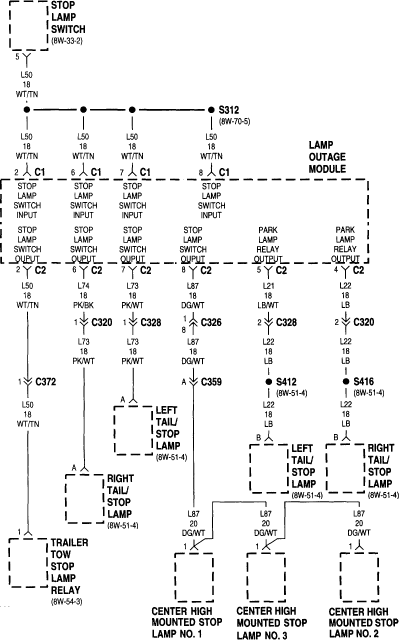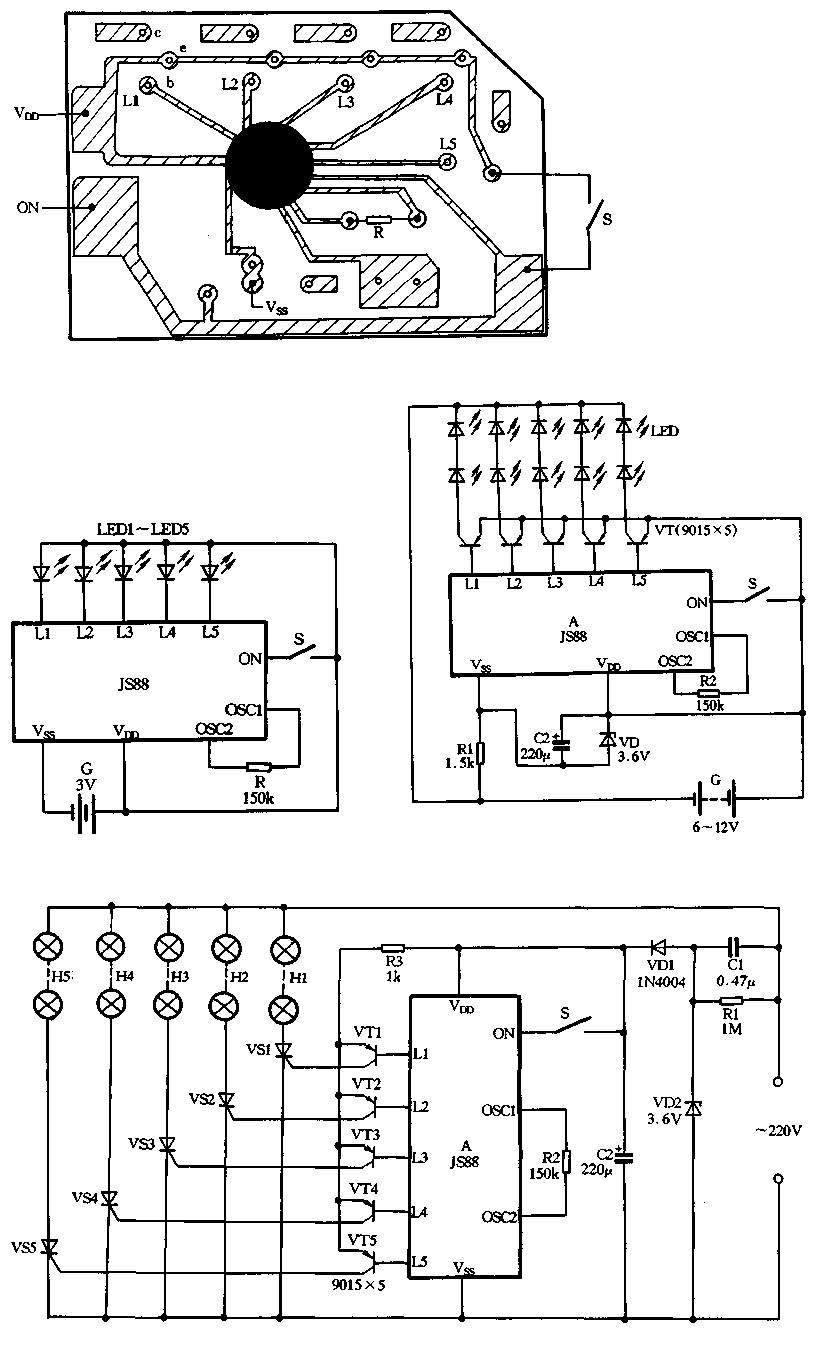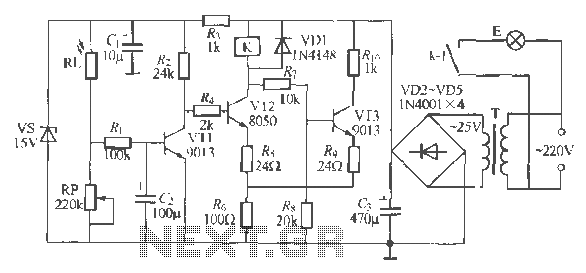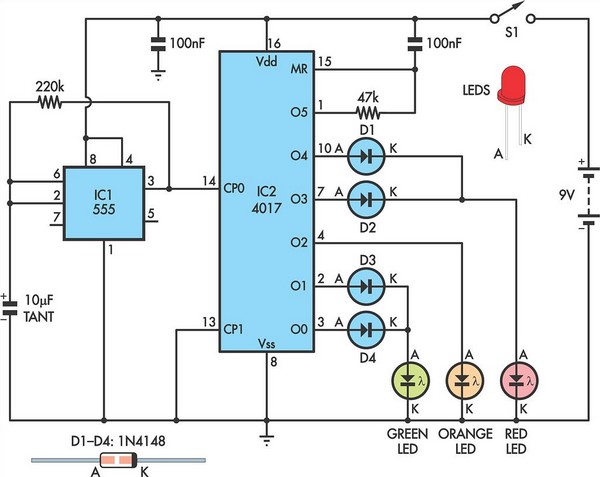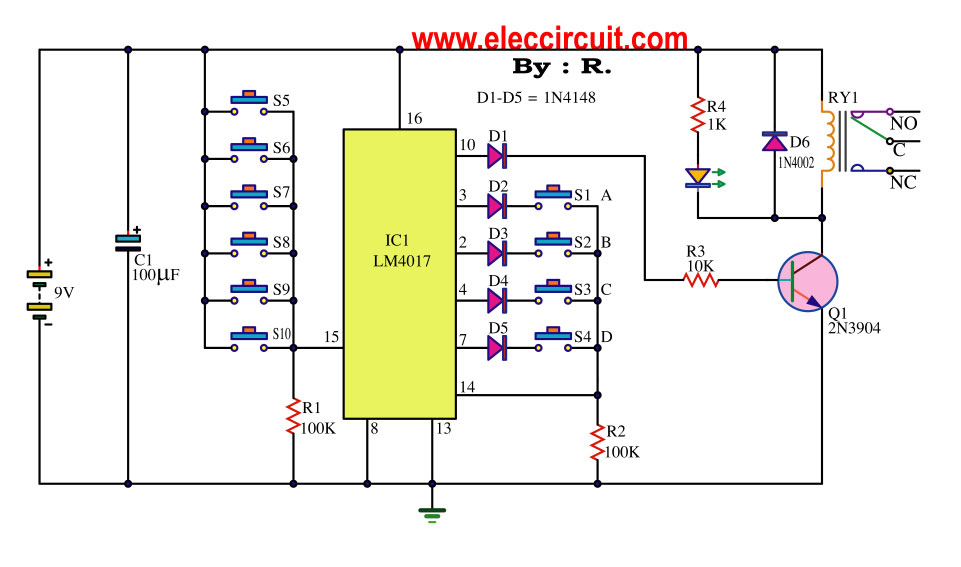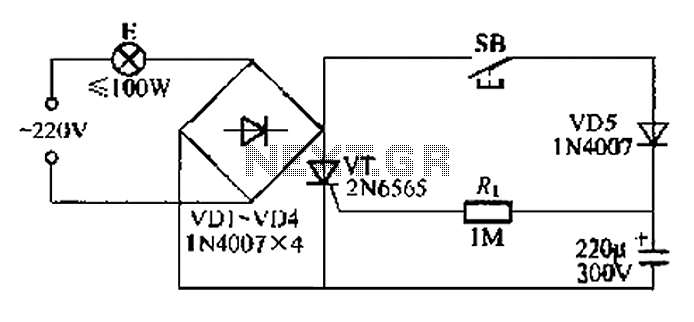
Switch Timer For Bathroom Light
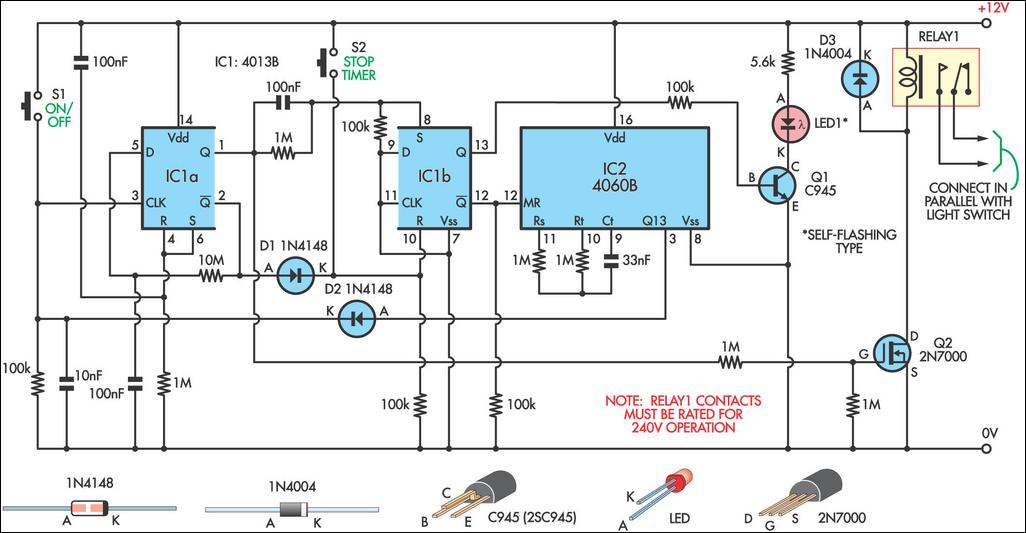
This 9-minute timer switch can be utilized to control lighting in a toilet or bathroom. The timer is activated by pressing switch S1 and deactivated by pressing S1 again. If the timer is not manually turned off, the light will automatically turn off after nine minutes. For continuous lighting, S1 must be pressed to turn on the light, followed by pressing S2 to cancel the timer within the 9-minute window. In this case, the light will remain on until it is switched off with S1. The circuit employs an IC1, which is a 4013 dual flip-flop. Flip-flop IC1a is toggled by switch S1 and controls a relay activated by FET Q2. IC1a also manages IC1b, configured as an RS flip-flop that enables or disables IC2, a 4060 oscillator/divider. The timing interval for the oscillator is determined by the components connected to pins 9, 10, and 11. The relay should be rated for 250VAC mains and is connected in parallel with an existing wall switch.
The circuit operates as follows: upon pressing switch S1, the first flip-flop (IC1a) toggles its state, which in turn energizes FET Q2. This action activates the relay, allowing current to flow to the light fixture. If S1 is pressed again within the designated period, IC1a toggles back, deactivating FET Q2 and turning off the relay, thus cutting power to the light.
Should the user desire continuous lighting without the timer, pressing S2 within the 9-minute timeframe disables the timing function, allowing the light to remain on until S1 is pressed again. This feature is particularly useful in scenarios where extended illumination is required without the risk of the light turning off unexpectedly.
The 4060 oscillator/divider (IC2) provides the timing mechanism for the circuit. It generates a clock signal that is divided down to create the desired 9-minute timing interval. This timing is set by external resistors and capacitors connected to pins 9, 10, and 11, which determine the frequency of the oscillator. The relay used in this circuit should be capable of handling the load of the light fixture while being rated for 250VAC operation to ensure safety and reliability.
In summary, this timer switch circuit effectively combines user control with automatic timing features to manage lighting in a bathroom setting, enhancing convenience while minimizing energy waste. The integration of flip-flops, an oscillator, and a relay allows for a straightforward yet effective design suitable for various applications.This 9-minute timer switch can be used to control the light in a toilet or bathroom. The timer is started by pushing S1 and stopped by pushing S1 again. If you forget to turn it off, the controlled light will go off after nine minutes. If you need the light on continuously non-stop, you need to press S1 (turn on) and then S2 (cancellation of timer ) within 9 minutes and in this case the light will be on until you switch it off with S1. IC1 is a is 4013 dual flip-flop. Flip flop IC1a is toggled on and off by switch S1 and it controls the relay which is switched by FET Q2. IC1a controls IC1b which is connected as an RS flipflop to enable or disable IC2, a 4060 oscillator/divider.
This has its timing interval set by the components at its pins 9, 10 & 11. The relay should have 250VAC mains-rated contacts and these are connected in parallel with an existing wall switch. 🔗 External reference
The circuit operates as follows: upon pressing switch S1, the first flip-flop (IC1a) toggles its state, which in turn energizes FET Q2. This action activates the relay, allowing current to flow to the light fixture. If S1 is pressed again within the designated period, IC1a toggles back, deactivating FET Q2 and turning off the relay, thus cutting power to the light.
Should the user desire continuous lighting without the timer, pressing S2 within the 9-minute timeframe disables the timing function, allowing the light to remain on until S1 is pressed again. This feature is particularly useful in scenarios where extended illumination is required without the risk of the light turning off unexpectedly.
The 4060 oscillator/divider (IC2) provides the timing mechanism for the circuit. It generates a clock signal that is divided down to create the desired 9-minute timing interval. This timing is set by external resistors and capacitors connected to pins 9, 10, and 11, which determine the frequency of the oscillator. The relay used in this circuit should be capable of handling the load of the light fixture while being rated for 250VAC operation to ensure safety and reliability.
In summary, this timer switch circuit effectively combines user control with automatic timing features to manage lighting in a bathroom setting, enhancing convenience while minimizing energy waste. The integration of flip-flops, an oscillator, and a relay allows for a straightforward yet effective design suitable for various applications.This 9-minute timer switch can be used to control the light in a toilet or bathroom. The timer is started by pushing S1 and stopped by pushing S1 again. If you forget to turn it off, the controlled light will go off after nine minutes. If you need the light on continuously non-stop, you need to press S1 (turn on) and then S2 (cancellation of timer ) within 9 minutes and in this case the light will be on until you switch it off with S1. IC1 is a is 4013 dual flip-flop. Flip flop IC1a is toggled on and off by switch S1 and it controls the relay which is switched by FET Q2. IC1a controls IC1b which is connected as an RS flipflop to enable or disable IC2, a 4060 oscillator/divider.
This has its timing interval set by the components at its pins 9, 10 & 11. The relay should have 250VAC mains-rated contacts and these are connected in parallel with an existing wall switch. 🔗 External reference
